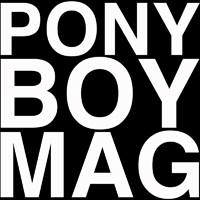PLASTIC PASSION
MARIA AYALA JEWELRY
Model Christina Anderson-McDonald courtesy of D&A Model Management. Photography Alexander Thompson. Stylist Maria Ayala. Hair Ahbi Nishman. Makeup by Lorcan Devaney.
From Maria Ayala…
Back in the late 80s, I moved from Austin, Texas to the Big Apple and was infatuated with all things relating to Andy Warhol and his fabulous factory. Meeting Andy was a dream of mine. And it follows that I was infatuated with the life of the young and beautiful heiress, Edie Sedgwick. Warhol’s best and brightest 60s superstar, Edie attended the most fantastic parties and was featured in Vogue magazine. I adored her free spirit, dark side and her fabulous style. I attempted to emulate her by wearing the shortest mini dresses, black tights and the longest earrings that I could find at the hippest stores. In truth, I probably resembled Warhol superstar International Velvet more so, with her black back-combed mane and up-dos.
No store was as hip as the downtown boutique, Patricia Field, and I shopped there weekly for Day-Glo makeup, the longest and thickest false eyelashes, and quirky, chandelier earrings. I became friends with the staff at the shop and soon enough found myself working at the make-up counter on weekends, while attending F.I.T. At the time, I went out as much as I could to underground clubs like The Tunnel, Red Zone, Pyramid, The World, and Limelight.
During that time, the visual manager, Jojo Americo, himself a style icon, took me down to Canal Street to Industrial Plastics. I was in heaven and bought some lucite glitter pieces that I found extremely attractive. I rushed home to play around with them. I was able to whip up a pair of shoulder-duster earrings and wore them out that evening to one of Michael Alig’s Outlaw parties.
The attention that these earrings received was instantaneous and tremendous. The very next day I went back with my boyfriend in tow. We filled a big bag with plastic shapes and soon had created a new, fabulous batch of jewelry, including gargantuan earrings, oversized rings and dangling bracelets for me to wear out that evening to Susanne Bartsch’s legendary monthly party at The Copacabana. I really wanted my larger-than-life jewelry to look like something out of the pages of a 1960s Vogue magazine editorial by none other than the infamous fashion editor Diane Vreeland.
It was at Susanne’s party that my boss, designer Patricia Field, noticed my eclectic nighttime looks (though my day looks were almost as over-the-top). She approached me about having my own 60s department at her shop, packed with vintage dresses, accessories and as much jewelry as I could make to fill the cases and keep sales rolling. Now, this was way before Pat’s Sex and the City fame. Pat’s store was well known for its extreme mix of fashion and the staff was equally expressive and unique individuals, functioning as the foundation for this highly creative subculture. We sold to everyone from sexy, East Village girls to club kids and trannies to uptown socialites. Pat was always way ahead of her time, very adept at selecting those talented young extroverts and providing them with the artistic environment in which to flourish.
Suddenly high fashion trends were shifting. The next thing I knew, fashion photographer Steven Meisel had shot model Linda Evangelista in head-to-toe Pucci for the pages of American Vogue magazine. This caused quite the sensation, and the resurgence for all things 60s in fashion came about. My vintage 60s department was booming and my jewelry was flying out the door. I worked in the boutique during the day, wearing and selling my jewelry, and went out at night wearing my latest creations. My boyfriend quit his day job and helped me assemble and design the jewelry so that I could fill the cases at Pat’s.
Stylists, fashion editors, designers, photographers and pop stars shopped in my department, and it was this exposure that brought my 60s inspired earrings, rings and bracelets to the pages of fashion magazines. I, myself, was photographed by the great Steven Meisel for Interview magazine, and other features followed as well, including MTV’s House of Style.
Naomi Campbell wore my earrings for Paper magazine and commissioned me to make a set of jewelry for her to wear to a Seventh On Sale benefit. Other models and celebrities were customers as well, including Rupaul, Kate Pierson from the B-52’s, Deborah Harry, and Rosey De Palma, just to name a few.
However no one brought my jewelry more attention than the “dee-gorgeous” Lady Miss Kier, singer for the overnight musical sensation known as Deee-Lite. Kier with her trademark flip hairdo and Pucci catsuits lovingly showcased my jewelry in her “Groove is in the Heart” video and on the album cover.
At this point, my business expanded and the wholesale orders would not stop coming in. Beyond the lucite shapes, I delved into casting molds and designing metals. However, a few years later, a Seattle-based band known as Nirvana took over the music world, and grunge was born. A young designer named Marc Jacobs showed flannel shirts and no jewelry on the runway for Perry Ellis, causing a ruckus in the fashion world. He wisely ushered in this street style movement, and other fashion designers were quick to follow the trend. Oversized lucite 60s jewelry was no longer in high demand. Grunge had taken over and with it minimalism in accessories and jewelry followed. And at the same time, I was experiencing great growth within the store, having taken over the womenswear buying and management, my focus was there. It was time to call it quits for making jewelry.
This editorial features my work from the late 80s to the mid-90s. Diving into my sample archives, memories and the few tear sheets that remained, I took a nostalgic trip back to my youth and shared it with ponyboymagazine.com.






